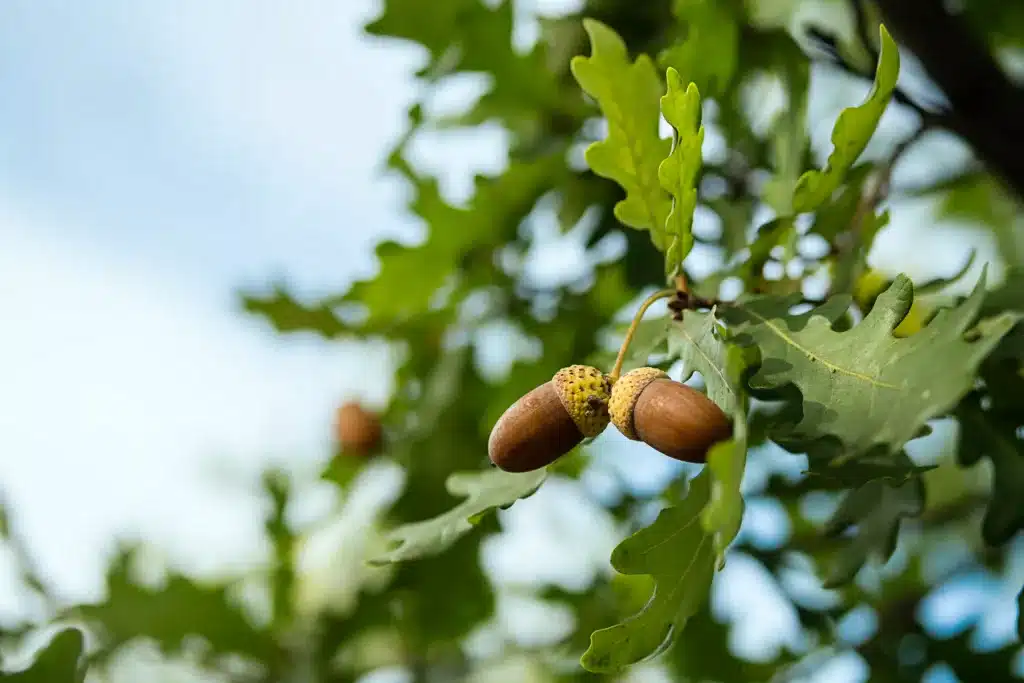Do you know what kind of hardwoods are in your woodlot? With over 19 million acres of forest cover, Michigan is home to a variety of different hardwood species. And of those species, some of the most valuable are maple, oak, walnut, and cherry.
In this blog post, we help you identify the most valuable hardwoods, their characteristics, and their worth when sustainably harvested from your woodlot or private forest.
Different Hardwood Tree Species in Michigan
The Great Lake state of Michigan is known for its diverse forests and valuable hardwoods. From the iconic Sugar Maple, Michigan’s state tree, to Northern Red Oak, Black Walnut, and Black Cherry, each species holds its own unique characteristics and value.
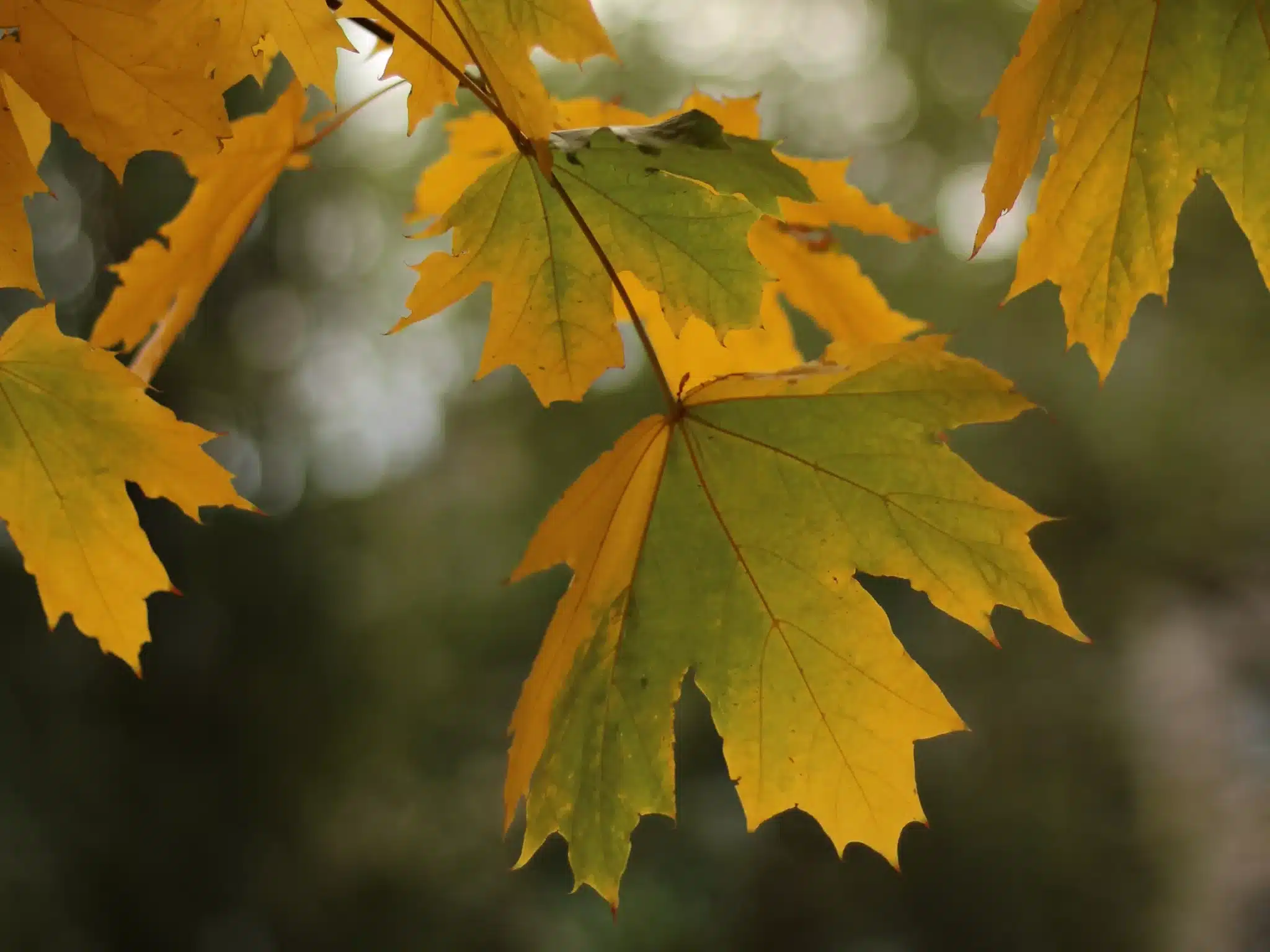
Maple
Michigan, with its cooler climate, is an ideal place for maple trees to grow and thrive. The most common species of maple found in Michigan are the sugar maple, red maple, and silver maple. Each variety has distinct characteristics—and identifying each species can be as simple as studying the leaf pattern.
Identifying Maple in Your Woodlot
Sugar Maple (Acer saccharum)
Leaf: They have an iconic “Canadian flag” shape—a large, 5-lobed symmetrical leaf pattern separated by smooth U-shaped margins. Its edges are somewhat smooth, not jagged and the leaves are dark yellow-green on top and lighter on the underside. They turn yellow, orange, or red in autumn.
Flower/Seed: They have winged seeds, called samaras, which resemble “helicopters.”
Bark: They have dark gray bark with furrowed ridges.
Size: They grow to be 50-80 feet tall.
Lifespan: They can live for several centuries, continuing to grow slowly throughout their lifespan.
How Fast They Grow: They grow 1-2 feet per year, taking 30-40 years to reach full height.
Red Maple (Acer rubrum)
Leaf: They have 3 to 5-lobed leaves with serrated edges and turn red in the fall.
Flower/Seed: They have small red flowers in the spring, followed by red-winged samaras.
Bark: Young red maples have smooth, gray bark that darkens and furrows with age.
Size: They are medium-sized, often with a rounded crown, reaching heights of 40-60 feet.
Lifespan: Having varied lifespans, they typically live between 80-100 years. However, some can live up to 150 years or more under ideal growing conditions.
How Fast They Grow: They are one of the fastest-growing trees in the eastern United States, growing about 13-14 inches per year and reaching their full maturity within 10-30 years.
Silver Maple
Leaf: They have 5-lobed leaves with distinctive silvery undersides and deep cuts between the lobes.
Flower/Seed: They produce large samaras that drop in spring.
Bark: Young silver maples have smooth, gray bark that becomes deeply furrowed with age.
Size: They often grow to be 50-80 feet tall with a sprawling crown.
Lifespan: They typically live around 100-130 years.
How Fast They Grow: Known for their rapid growth, they grow around 2-3 feet per year and mature within 40-50 years.
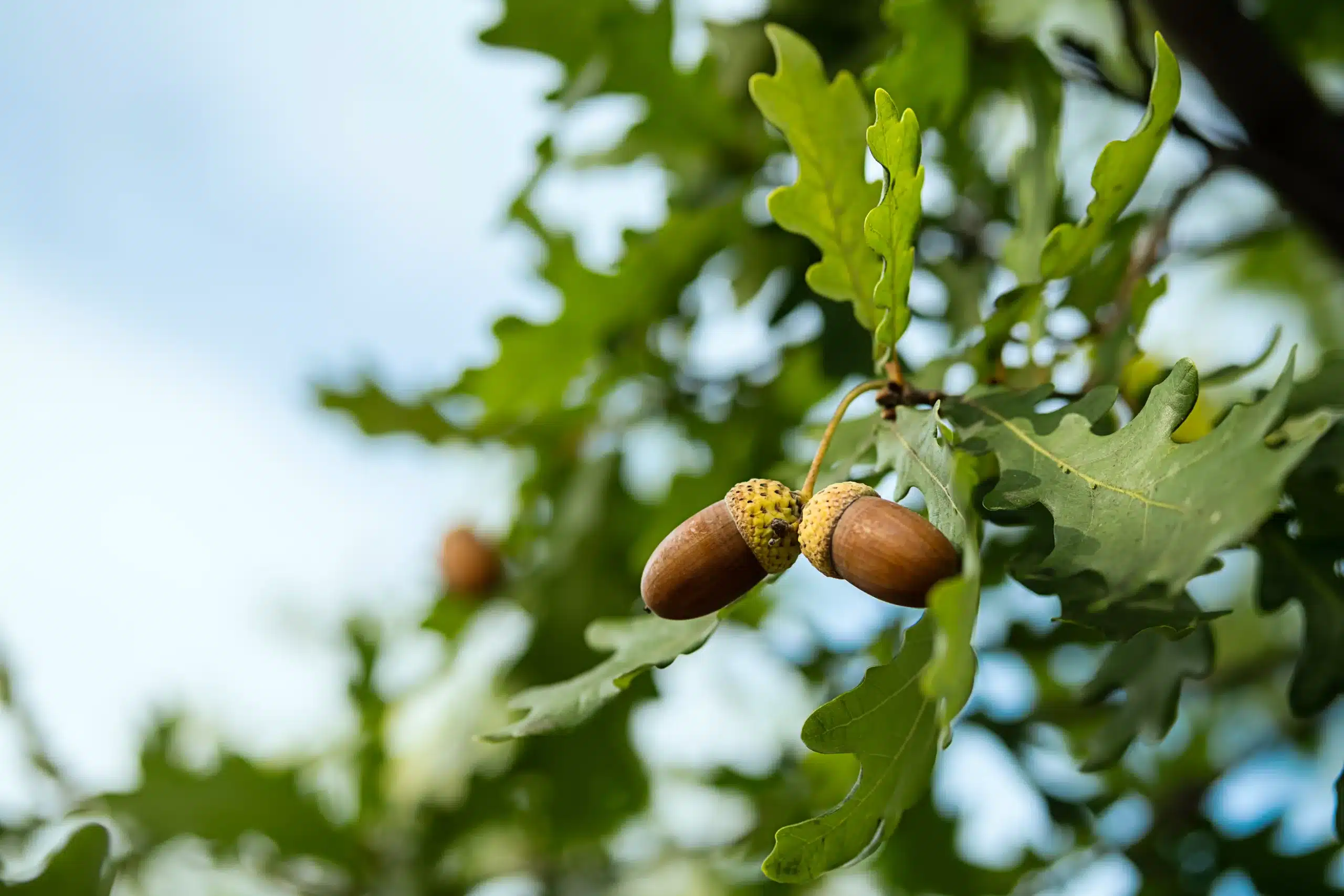
Oak
Of the 600 species of oaks worldwide, 10 are native to Michigan. All oaks produce acorns, are a part of the genus Quercus, and can be placed into two categories: red oaks and white oaks. These hardwoods are essential to the lumber and furniture industry.
Identifying Oak in Your Woodlot
Northern Red Oak (Quercus rubra)
Leaf: They have long, lobed leaves with pointed tips that turn red or bronze in fall.
Flower/Seed: In the spring, oaks make catkins, or small, cylinder-shaped flower spikes. But in the fall, they make barrel-shaped acorns with bumpy caps.
Bark: They have light gray, ridged bark.
Size: They grow to be around 60-75 feet tall.
Lifespan: They are large trees that can live for hundreds of years.
How Fast They Grow: They are moderate to fast growers when young but tend to slow down as they age, growing around 1 to 2 feet per year and maturing within 100-250 years.
White Oak (Quercus alba)
Leaf: They have long, lobed leaves with curved edges that turn red or burgundy in the fall.
Flower/Seed: In spring, oaks make catkins, and in the fall, they make oval acorns with bumpy caps.
Bark: They have light gray, ridged bark.
Size: They grow to be around 50-80 feet tall.
Lifespan: They are large trees that can live for hundreds of years.
How Fast They Grow: They grow relatively slowly when compared to other species, growing about 1 to 2 feet per year and maturing within 100-300 years.
Learn More About Harvesting Oak from Your Woodlot.
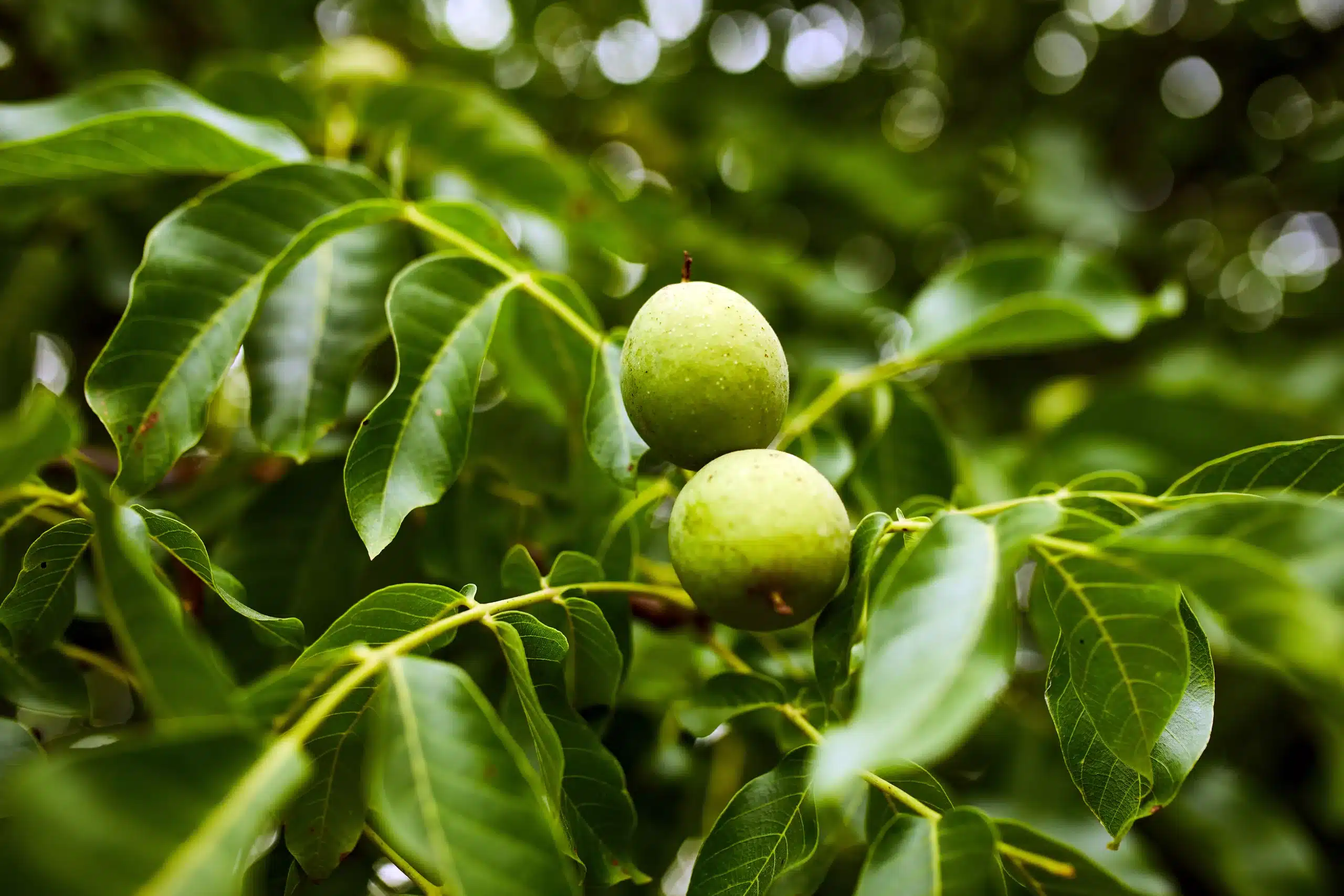
Walnut
Native to Michigan, Black Walnut hardwood is highly valued for its grain and resistance to warping. The fine, straight-grained wood is often used to make prized high-end pieces of furniture and cabinetry.
Identifying Walnut in Your Woodlot
Black Walnut (Juglans nigra)
Leaf: They have compound leaves featuring alternate, toothed leaflets coming from a central stem.
Flower/Seed: They make nuts with green husks and black inner kernels in the fall.
Bark: Their bark is dark brown to black, with deep furrows and pits.
Size: They grow to be around 50-75 feet tall.
Lifespan: They typically live around 100-150 years.
How Fast They Grow: They are considered moderate to fast growers, growing around 1-3 feet per year and reaching full maturity within 30-50 years.
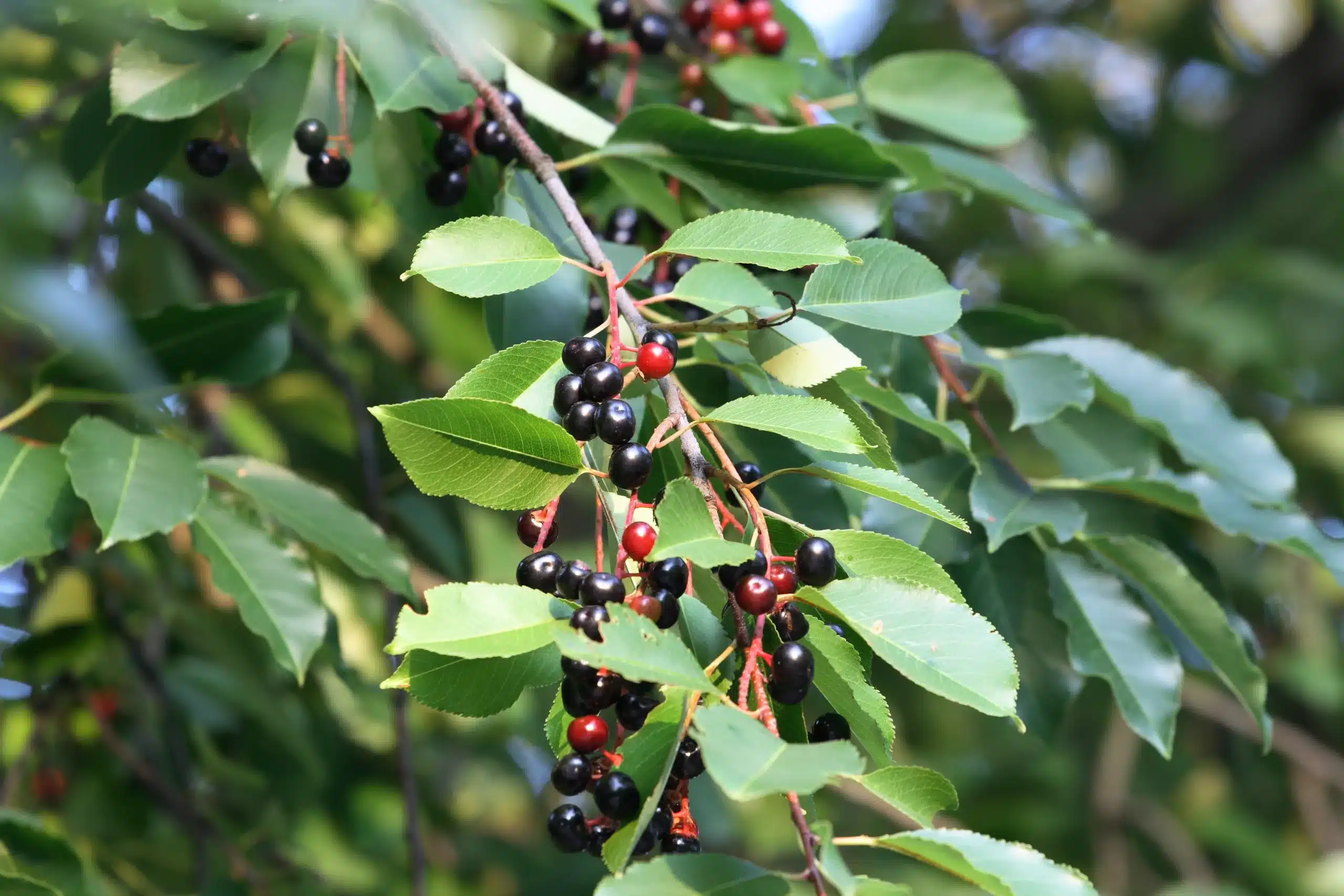
Cherry
Michigan black cherry trees are the largest of the native cherries, making them the only ones suitable for commercial use. Also known as wild black cherry, rum cherry, and mountain black cherry, these high-quality trees produce luxury wood often used for furniture.
Identifying Cherry in Your Woodlot
Black Cherry (Prunus serotina)
Leaf: They have pointed oval leaves with fine serrations that turn from green to red and yellow in the fall.
Flower/Seed: They produce white flowers that grow in long clusters and then pea-sized, bitter cherry fruits.
Bark: They have dark, scaly bark that flips up on the edges when the tree is mature.
Size: They grow to be around 50-85 feet tall.
Lifespan: They typically live around 100-150 years.
How Fast They Grow: They are moderate to fast growers, growing around 1-2 feet per year and reaching full maturity within 30-50 years.
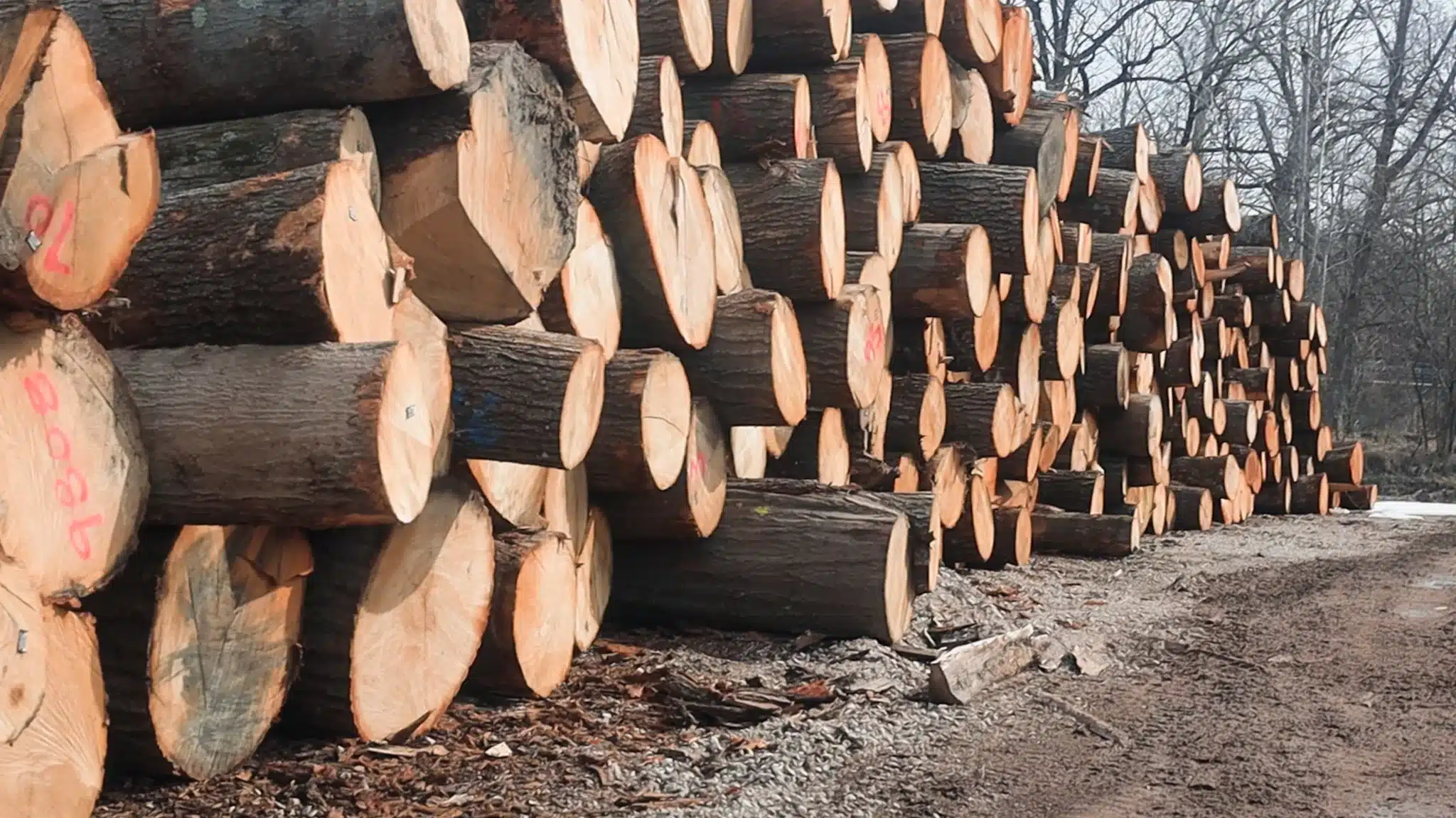
Managing Your Michigan Woodlot
Now that you’ve identified the types of hardwood in your woodlot or forest, harvesting is the next step in making a little money and taking good care of your property.
Timber Harvesting Methods
There are two main timber harvesting types including clear cutting and selective harvesting.
- Clear Cutting – Where most or all of the trees in a designated area of the woodlot are removed at once, regardless of size or species.
- Selective Harvesting – Where only certain trees are harvested, based on size, species, and condition.
While clear cutting can result in soil erosion, habitat loss, and water quality problems, selective harvesting is a sustainable process that promotes the growth of your woodlot by maintaining forest structure, minimizing soil disturbance, and aiding in natural regeneration. This is why we use selective harvesting for forest management at Buskirk Lumber.
How Often Should You Harvest Your Woodlot?
We recommend harvesting your woodlot every 7-10 years. As experts, we never suggest cutting down trees that aren’t necessary or are below size requirements. And at Buskirk Lumber, we will evaluate your woodlot and help set up a select harvest schedule.
Read more about when to harvest your timber.
Why is Selling to A Sawmill the Most Profitable Option?
While you could work with brokers, consulting foresters, and loggers to sell your timber, none of these options guarantee the highest direct profit. Instead, sell directly to a sawmill to negotiate and receive higher prices for your timber. See how selling mill direct compares to working with brokers, consulting foresters, and loggers.
When you work with Buskirk Lumber, you bypass middlemen and brokers—and you don’t have to hire a logging crew, transportation fleet, other sawmills, or any third parties! We have all the resources you need in-house. This allows more of the profits from your timber to flow directly to you.
Which Hardwood Trees in Michigan Yield the Highest Prices?
High-quality hardwoods like maple, oak, walnut, and cherry typically yield higher prices than other hardwoods like basswood, hickories, beech, etc. However, there are several factors that can influence your timber appraisal like size, volume, stand composition, quality, grade, age, location, and market conditions. Learn more about timber appraisals.
Ready to know the value of your timber? Contact our experienced timber procurement team today for a comprehensive timber assessment in Michigan’s lower peninsula, Northern Indiana, or Northern Ohio. Send us a message online or call our timber procurement department at 800-860-WOOD.
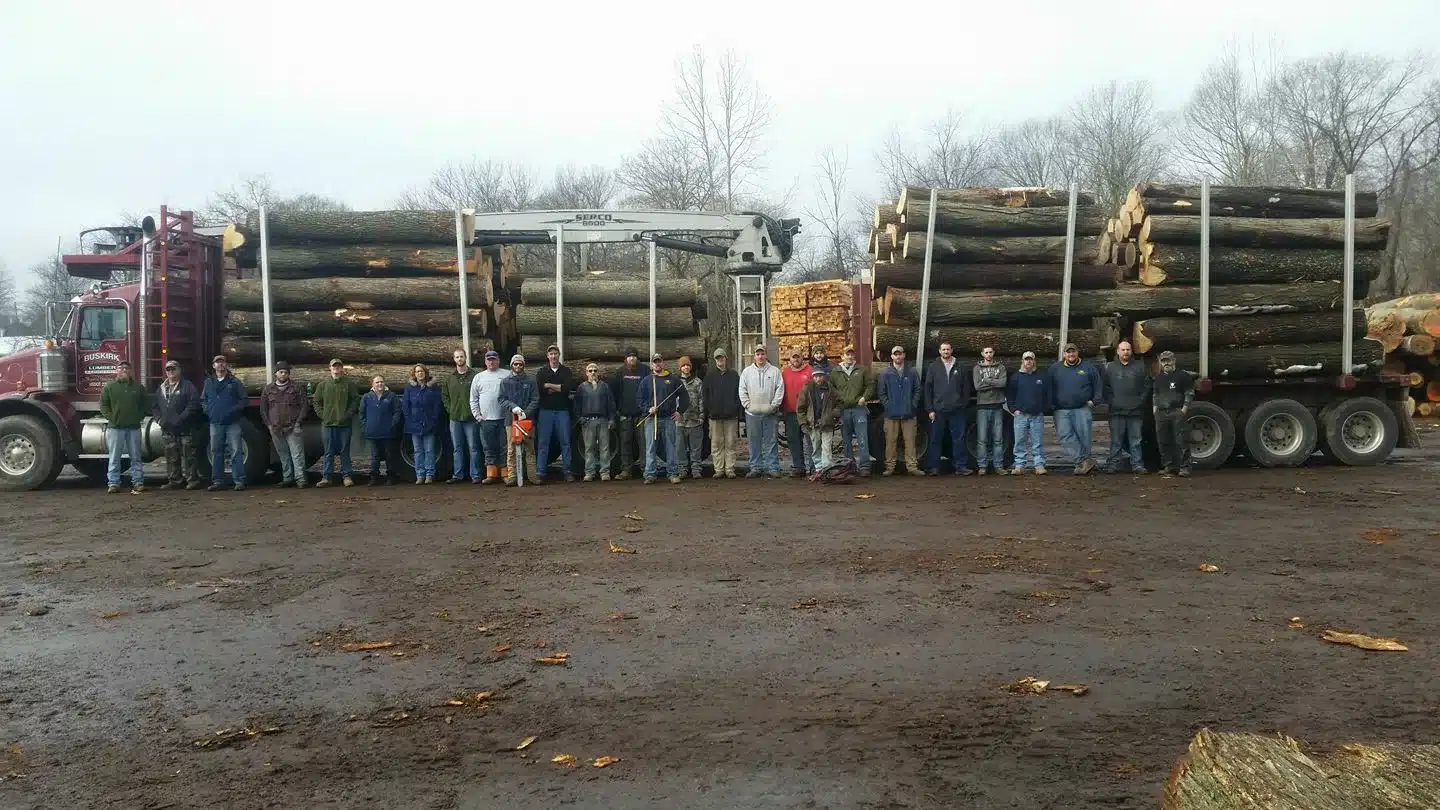
Buskirk Lumber: One of Michigan’s Largest Hardwood Sawmills since 1920
Having been in business for over 100 years and operating one of Michigan’s largest state-of-the-art sawmills, we serve as trusted buyers of standing timber—creating hundreds of finished end products like veneer logs, hardwood lumber, hardwood mulch, specialty products, and more!
With an award-winning team of professionals, our own state-of-the-art fleet of logging and lumber trucks, and a variety of local Michigan partners like lumber companies, sawmills, and pallet providers, we are able to offer you a comprehensive range of timber-related services. Trust us to be professional, transparent, and treat your property as if it were our own.
Proudly established in Michigan’s Lower Peninsula, Northern Indiana, and Northern Ohio, we’ll help you make sustainable harvesting decisions for your woodlot in:
- Allendale, MI
- Benton Harbor, MI
- Big Rapids, MI
- Bowling Green, OH
- Cadillac, MI
- Cleveland, OH
- Elkhart, IN
- Elk Rapids, MI
- Gaylord, MI
- Grand Haven, MI
- Grand Rapids, MI
- Holland, MI
- Jenison, MI
- Kalamazoo, MI
- Manistee, MI
- Michigan City, IN
- Middlebury, IN
- Mt. Pleasant, MI
- Muskegon, MI
- Petoskey, MI
- Ravenna, MI
- Saint Johns, MI
- Sandusky, OH
- Saugatuck, MI
- Silver Lake, MI
- Toledo, OH
- Traverse City, MI
- West Olive, MI
